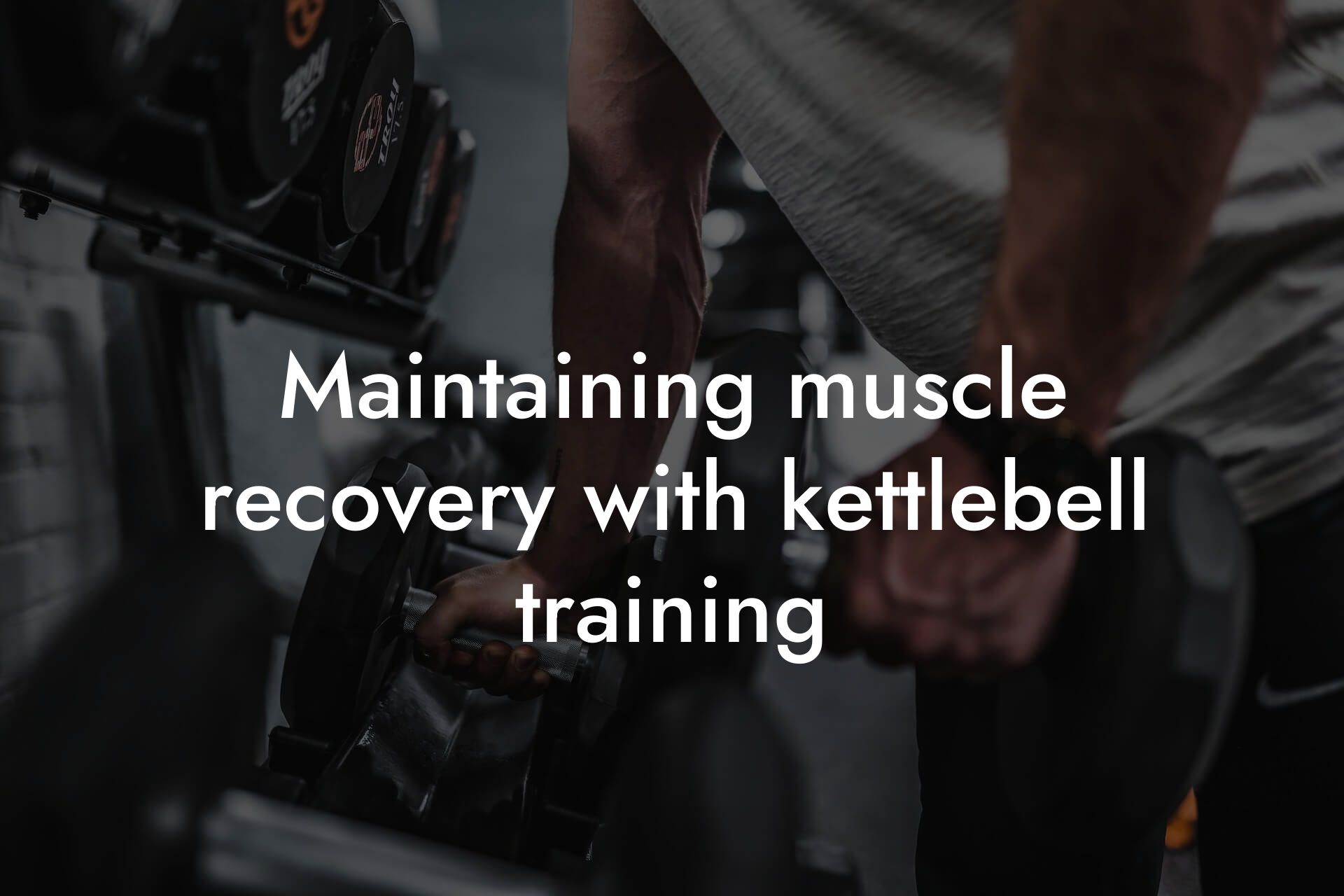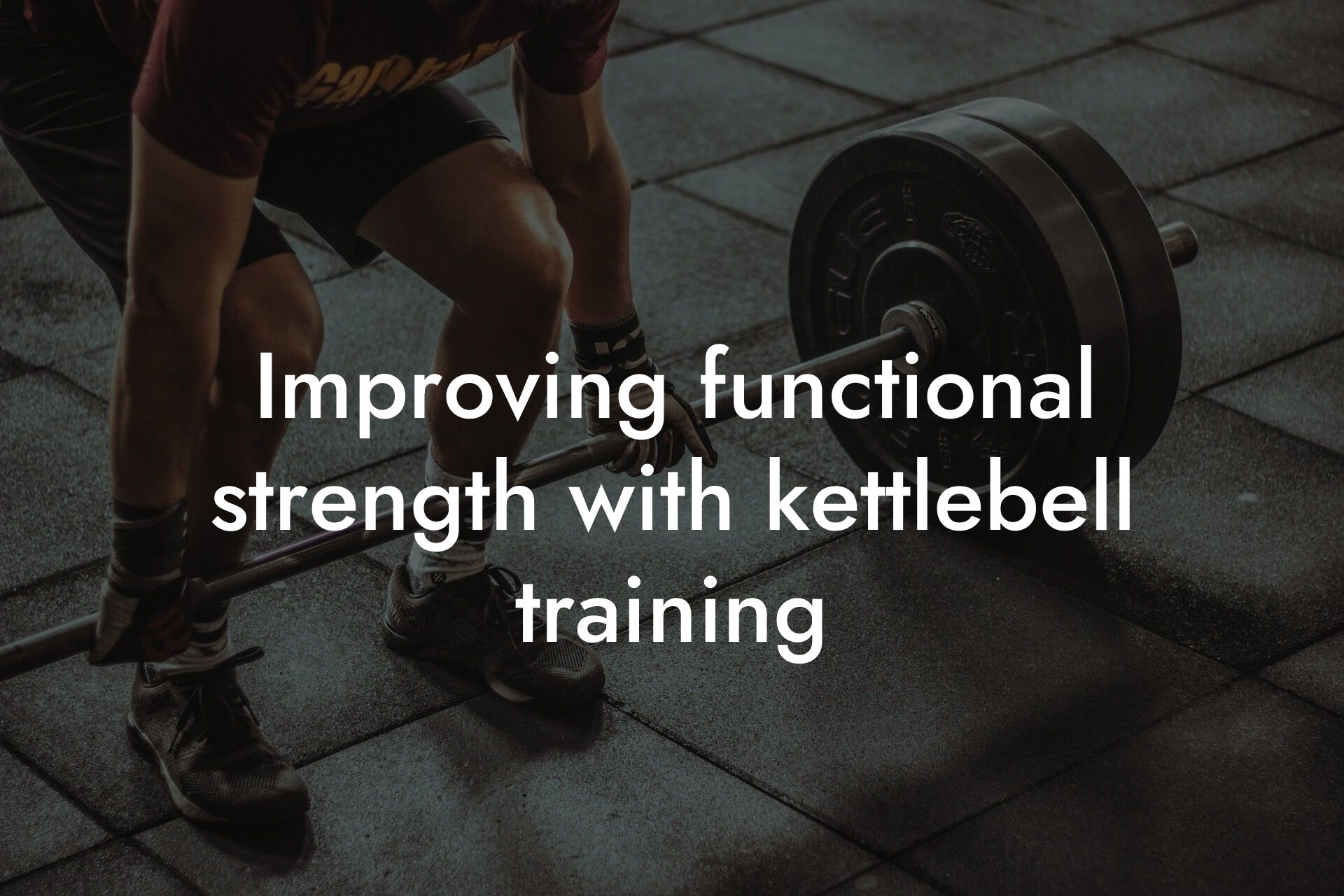As a high-earning professional, you understand the importance of maintaining a strong physical appearance and optimal body composition. Whether you're looking to improve your overall health, enhance your athletic performance, or simply feel more confident in your own skin, kettlebell training can be a valuable addition to your fitness routine. However, to get the most out of kettlebell training, it's essential to understand the role of body composition in performance.
Table of Contents
- What is Body Composition?
- Why is Body Composition Important for Kettlebell Training?
- The Impact of Body Fat Percentage on Kettlebell Training
- The Importance of Lean Mass for Kettlebell Training
- How to Measure Body Composition for Kettlebell Training
- Optimizing Body Composition for Kettlebell Training
- Frequently Asked Questions
What is Body Composition?
Body composition refers to the percentage of fat and lean mass in your body. Lean mass includes muscle, bone, and other non-fat tissues, while fat mass includes both essential and storage fat. Understanding your body composition is crucial because it can affect your overall health, athletic performance, and even your mental well-being. A healthy body composition typically consists of a higher percentage of lean mass and a lower percentage of fat mass.
Why is Body Composition Important for Kettlebell Training?
Kettlebell training is a high-intensity, dynamic form of exercise that requires a combination of strength, power, and endurance. Having a healthy body composition can significantly improve your performance in kettlebell training. For example, having a higher percentage of lean mass can increase your strength and power output, allowing you to lift heavier weights and perform more complex exercises. On the other hand, having a higher percentage of fat mass can reduce your power output and increase your risk of injury.
The Impact of Body Fat Percentage on Kettlebell Training
Body fat percentage is a critical component of body composition that can significantly affect your kettlebell training performance. Excess body fat can reduce your power output, increase your risk of injury, and make it more difficult to perform complex exercises. For example, having a high percentage of body fat can make it more challenging to perform exercises that require explosive power, such as the kettlebell swing or snatch. Additionally, excess body fat can increase your risk of injury, particularly in the lower back and joints.
The Importance of Lean Mass for Kettlebell Training
Lean mass, on the other hand, is essential for optimal kettlebell training performance. Having a higher percentage of lean mass can increase your strength, power, and endurance, allowing you to perform more complex exercises and lift heavier weights. Additionally, lean mass can help improve your overall athletic performance, reducing your risk of injury and improving your overall fitness level.
How to Measure Body Composition for Kettlebell Training
Measuring body composition is crucial for optimizing your kettlebell training performance. There are several methods available, including dual-energy X-ray absorptiometry (DEXA), skinfold measurements, and bioelectrical impedance analysis (BIA). At Tano Performance Group, we use DEXA scanning to provide our clients with a comprehensive body composition analysis. This allows us to accurately measure their lean mass, fat mass, and bone density, providing a detailed picture of their overall body composition.
Optimizing Body Composition for Kettlebell Training
Optimizing your body composition for kettlebell training requires a combination of proper nutrition, consistent training, and sufficient rest and recovery. Here are some tips to help you optimize your body composition:
- Focus on whole, nutrient-dense foods, including lean proteins, complex carbohydrates, and healthy fats.
- Incorporate strength training exercises, such as kettlebell swings and squats, to build lean mass.
- Incorporate high-intensity interval training (HIIT) to improve your cardiovascular fitness and burn excess fat.
- Get sufficient rest and recovery, aiming for 7-9 hours of sleep per night and taking rest days as needed.
In conclusion, body composition plays a critical role in kettlebell training performance. Having a healthy body composition, with a higher percentage of lean mass and a lower percentage of fat mass, can significantly improve your strength, power, and endurance. By measuring your body composition using DEXA scanning and optimizing your nutrition, training, and recovery, you can take your kettlebell training to the next level and achieve your fitness goals. At Tano Performance Group, we're committed to helping high-earning professionals like you achieve optimal body composition and peak physical performance.
Frequently Asked Questions
What is body composition, and why is it important in kettlebell training?
Body composition refers to the proportion of fat and lean mass in the body. In kettlebell training, body composition plays a crucial role as it affects an individual's performance, power, and overall efficiency. A well-balanced body composition can enhance athletic performance, reduce the risk of injury, and improve overall health.
How does body fat percentage impact kettlebell training performance?
Excess body fat can negatively impact kettlebell training performance by reducing power, speed, and endurance. Higher body fat percentages can also increase the risk of injury and decrease overall athletic performance. On the other hand, a leaner body composition can improve performance, increase power output, and enhance overall athleticism.
What is the ideal body fat percentage for kettlebell training?
The ideal body fat percentage for kettlebell training varies depending on the individual's goals and training level. Generally, a body fat percentage between 10-15% for men and 15-20% for women is considered optimal for athletic performance. However, this can vary depending on individual factors such as age, muscle mass, and training experience.
How does muscle mass impact kettlebell training performance?
Muscle mass plays a critical role in kettlebell training performance. Increased muscle mass can improve power output, speed, and endurance, allowing individuals to perform exercises with more efficiency and effectiveness. Additionally, muscle mass can also help to reduce the risk of injury and improve overall athleticism.
What is the relationship between bone density and kettlebell training?
Bone density is an important factor in kettlebell training as it affects an individual's ability to withstand the physical demands of the exercises. Kettlebell training can help to improve bone density, particularly in older adults, which can reduce the risk of osteoporosis and fractures. Additionally, kettlebell training can also improve muscle mass, which can further enhance bone density.
How does body composition affect power output in kettlebell training?
Body composition has a significant impact on power output in kettlebell training. A leaner body composition can improve power output by allowing individuals to generate more force and speed. On the other hand, excess body fat can reduce power output and decrease overall athletic performance.
Can kettlebell training help with weight loss and body fat reduction?
Yes, kettlebell training can be an effective way to lose weight and reduce body fat. Kettlebell exercises are high-intensity and can help to increase caloric expenditure, leading to weight loss and fat reduction. Additionally, kettlebell training can also help to build muscle mass, which can further enhance weight loss and fat reduction.
How does kettlebell training impact muscle mass and body composition?
Kettlebell training can help to build muscle mass and improve body composition by increasing muscle protein synthesis and promoting muscle growth. Additionally, kettlebell training can also help to reduce body fat percentage, leading to a more athletic and lean physique.
What is the importance of progressive overload in kettlebell training for body composition?
Progressive overload is essential in kettlebell training for body composition as it challenges the muscles and promotes muscle growth and strength gains. Gradually increasing the weight or resistance can help to build muscle mass, improve bone density, and enhance overall athleticism.
How does kettlebell training impact athletic performance and overall fitness?
Kettlebell training can significantly improve athletic performance and overall fitness by increasing power, speed, endurance, and strength. Additionally, kettlebell training can also improve coordination, agility, and balance, leading to enhanced overall athleticism.
Can kettlebell training be modified for different fitness levels and goals?
Yes, kettlebell training can be modified to suit different fitness levels and goals. For beginners, kettlebell exercises can be modified to reduce the intensity and weight, while for more advanced individuals, the exercises can be progressed to increase the challenge and intensity.
What is the role of nutrition in kettlebell training for body composition?
Nutrition plays a critical role in kettlebell training for body composition. A well-balanced diet that provides adequate protein, carbohydrates, and healthy fats can help to support muscle growth, recovery, and overall athletic performance.
How does kettlebell training impact mental toughness and confidence?
Kettlebell training can significantly improve mental toughness and confidence by challenging individuals to push beyond their limits and overcome physical and mental obstacles. Additionally, kettlebell training can also help to reduce stress and anxiety, leading to improved overall well-being.
What are the benefits of incorporating kettlebell training into a fitness routine?
Incorporating kettlebell training into a fitness routine can provide numerous benefits, including improved athletic performance, increased muscle mass, enhanced bone density, and reduced body fat percentage. Additionally, kettlebell training can also improve overall fitness, coordination, and agility.
How does kettlebell training compare to other forms of exercise for body composition?
Kettlebell training is a unique and effective way to improve body composition compared to other forms of exercise. Kettlebell exercises are high-intensity and can help to build muscle mass, reduce body fat, and improve overall athleticism. Additionally, kettlebell training can also be modified to suit different fitness levels and goals.
What are the common mistakes to avoid in kettlebell training for body composition?
Common mistakes to avoid in kettlebell training for body composition include poor form and technique, inadequate warm-up and cool-down, and insufficient progressive overload. Additionally, failing to incorporate proper nutrition and recovery strategies can also hinder progress and results.
How does kettlebell training impact overall health and wellness?
Kettlebell training can have a significant impact on overall health and wellness by improving cardiovascular health, reducing the risk of chronic diseases, and enhancing overall physical and mental well-being. Additionally, kettlebell training can also improve sleep quality, reduce stress and anxiety, and boost mood and energy levels.
Can kettlebell training be used as a rehabilitation tool for injuries?
Yes, kettlebell training can be used as a rehabilitation tool for injuries. Kettlebell exercises can be modified to suit individual needs and goals, and can help to improve strength, mobility, and function. Additionally, kettlebell training can also help to reduce the risk of re-injury and improve overall athletic performance.
How does kettlebell training impact bone density in older adults?
Kettlebell training can have a significant impact on bone density in older adults by improving muscle mass, strength, and overall athleticism. Additionally, kettlebell training can also help to reduce the risk of osteoporosis and fractures, leading to improved overall health and well-being.
What are the benefits of working with a personal trainer or coach for kettlebell training?
Working with a personal trainer or coach for kettlebell training can provide numerous benefits, including improved form and technique, increased motivation and accountability, and personalized programming and guidance. Additionally, a personal trainer or coach can also help to identify and address individual limitations and plateaus.
How does kettlebell training impact overall athletic performance and sports performance?
Kettlebell training can significantly improve overall athletic performance and sports performance by increasing power, speed, endurance, and strength. Additionally, kettlebell training can also improve coordination, agility, and balance, leading to enhanced overall athleticism and sports performance.
What are the key takeaways for incorporating kettlebell training into a fitness routine for body composition?
The key takeaways for incorporating kettlebell training into a fitness routine for body composition include focusing on progressive overload, incorporating a variety of exercises, and prioritizing proper form and technique. Additionally, it is also important to incorporate proper nutrition and recovery strategies to support muscle growth and overall athletic performance.
Here are some related articles you might love...
- Maintaining muscle recovery with kettlebell training
- Improving functional strength with kettlebell training
- Reducing body fat for better kettlebell workout results
- The importance of bone density in kettlebell fitness
- Nutrition strategies for kettlebell enthusiasts
- Strength training tips specific to kettlebell exercises
- Balancing strength, speed, and flexibility in kettlebell workouts
- How DEXA scans can benefit kettlebell training athletes
Zak Faulkner
Zak Faulkner is a leading authority in the realm of physical health and body composition analysis, with over 15 years of experience helping professionals optimise their fitness and well-being. As one the experts behind Tano Performance Group, Zak has dedicated his career to providing in-depth, science-backed insights that empower clients to elevate their physical performance and overall health.
With extensive knowledge of DEXA technology, Zak specializes in delivering comprehensive body assessments that offer precise data on body fat, muscle mass, bone density, and overall physique. His expertise enables individuals to make informed decisions and achieve their fitness goals with accuracy and confidence. Zak’s approach is rooted in a deep understanding of human physiology, combined with a passion for helping clients unlock their full potential through personalised strategies.
Over the years, Zak has earned a reputation for his commitment to excellence, precision, and client-focused service. His guidance is trusted by top professionals who demand the best when it comes to their health. Whether advising on fitness programs, nutritional strategies, or long-term wellness plans, Zak Faulkner’s insights are a valuable resource for anyone serious about taking their health and fitness to the next level.
At Tano Performance Group, Zak continues to lead our Content Team revolutionising how professionals approach their physical health, offering unparalleled expertise that drives real results.




